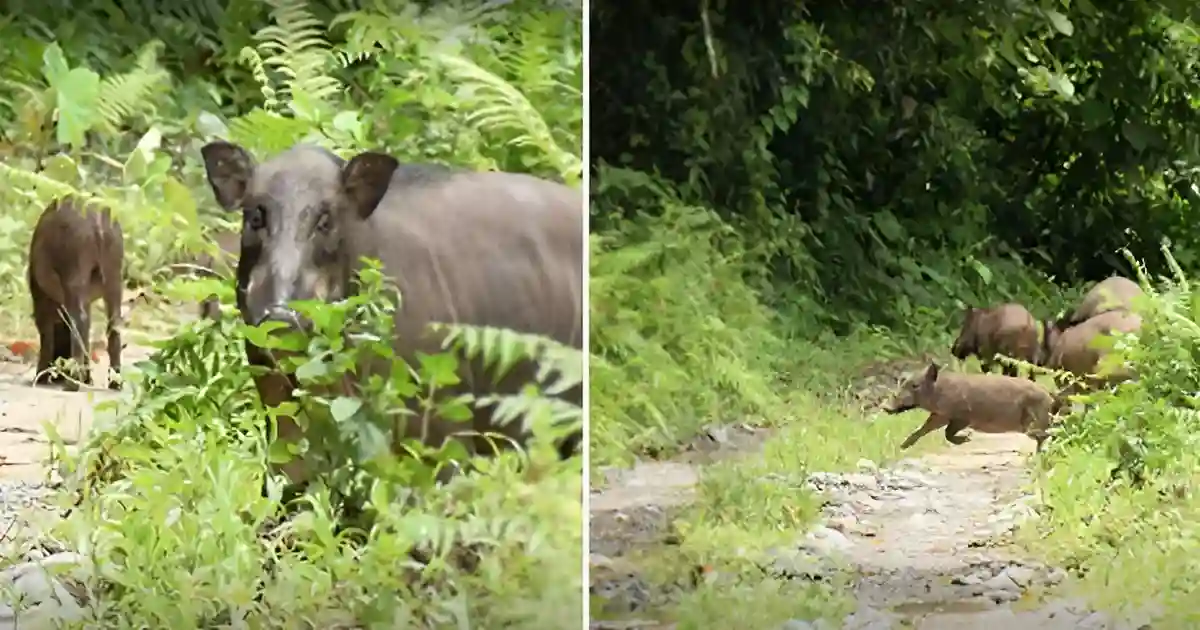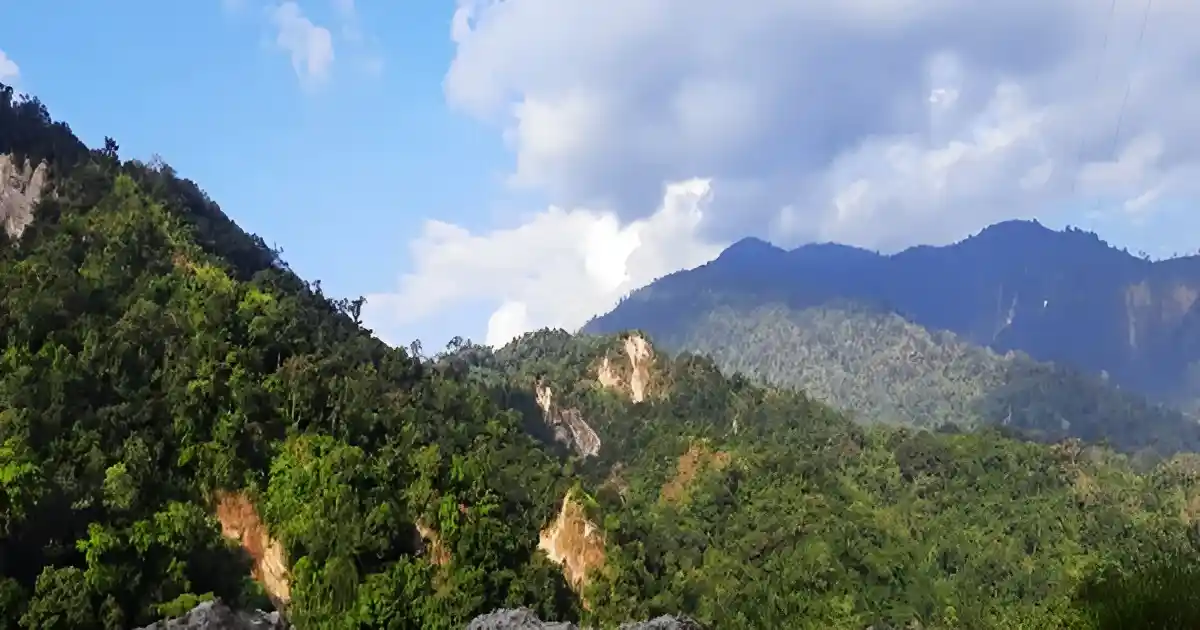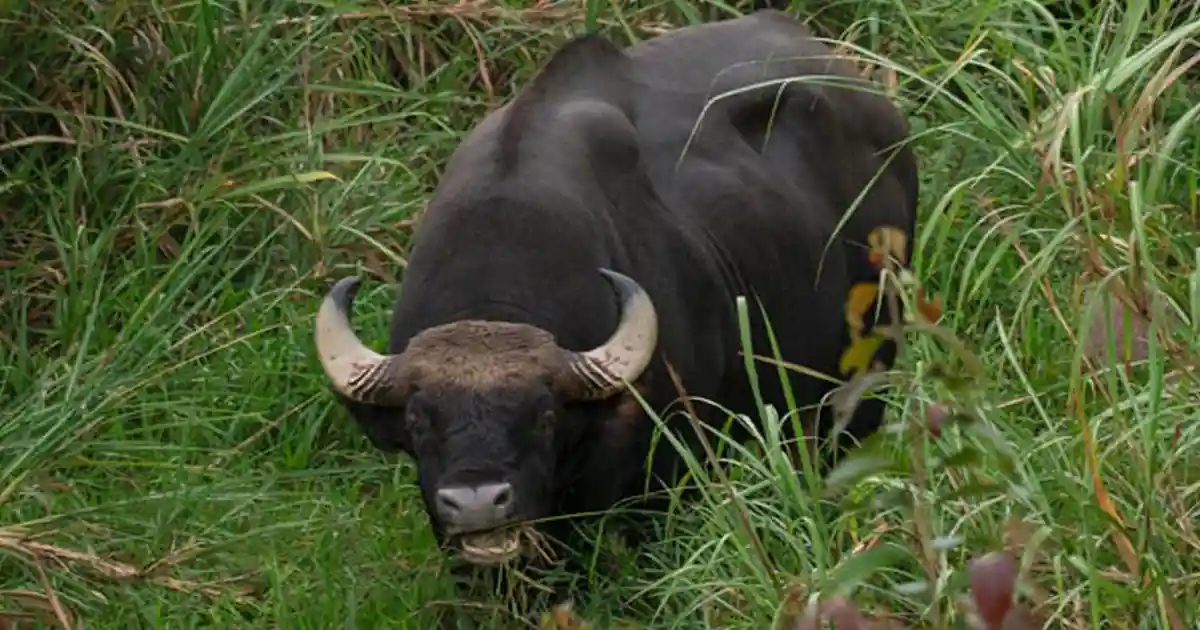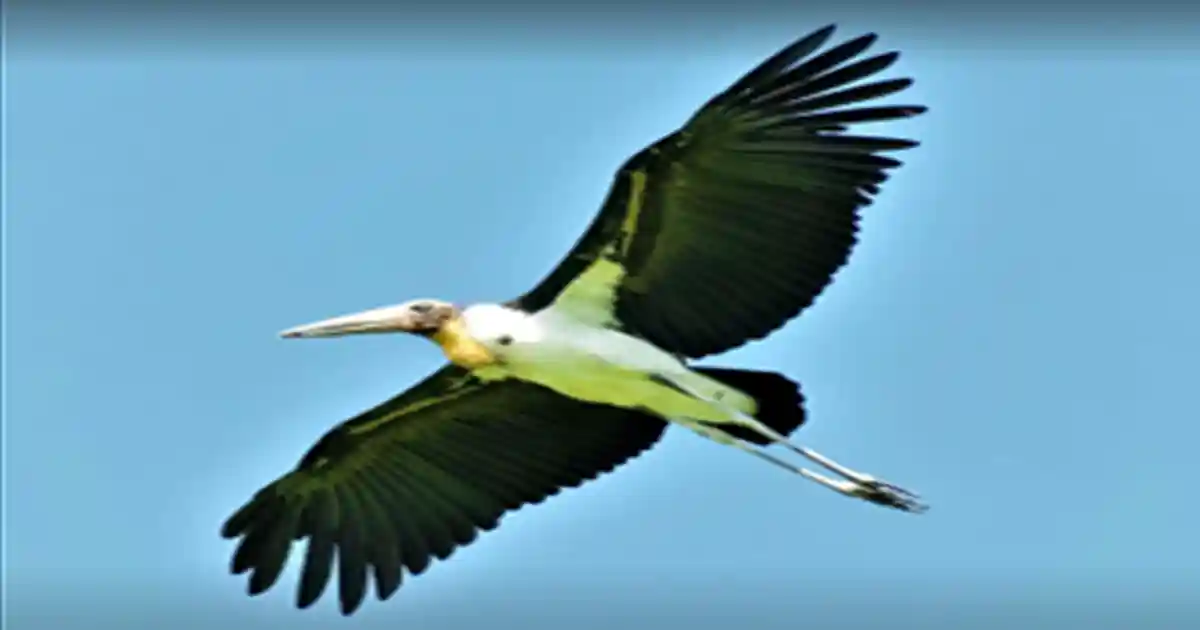Encompassing 220sq km the Sonai Rupai Wildlife Sanctuary was declared as Wildlife Sanctuary in 1998 covering Sub-Himalayan Light Alluvial Semi Evergreen Forests area of Sonitpur district of Assam, India. The present core area of the sanctuary covers 175sq km extending over the foothills of the Eastern Himalayan range. It was first declared as Sonai Rupai Game Sanctuary in the year 1934 by the British Authority covering 85 square miles of the Charduar Reserve Forest. The Charduar Reserve Forest was created during British period in 1878. Sonai-Rupai got its name from a small river that flows through this area.
The Sonai Rupai Wildlife Sanctuary is famous for its historically rich biodiversity and is a home to species like Indian wild bison, Asian Elephant, tiger, leopard, wild boar and the White Winged Wood Duck to name a few.
Sonai Rupai Wildlife Sanctuary Location
The Sonai Rupai Wildlife Sanctuary is located in the north western area of Sonitpur district of Assam sharing interstate boundary on its northern area along Arunachal Pradesh. The sanctuary distance from the district headquarters Tezpur is 53 km and nearly 172 km from Guwahati the state capital. The geographical area of the sanctuary lies between latitudes 26° 51′ 36″N to 26° 57′36″N and longtitude 92° 20′ 24″E to 92° 34′48″E. The sanctuary situated at an elevation ranging from 400 to 700 feet above sea level. Rainfall ranges between 2000-2800mm.
Area description of Sonai Rupai Wildlife Sanctuary
1. District (Civil): Sonitpur
2. Forest Division: Sonitpur West Division
3. Sub-Division (Civil): Tezpur
4. Revenue Circle: Dhekiajuli
5. Mouza : Dhekiajuli & Missmari
6. Name of the Wildlife Sanctuary: Sonai Rupai Wildlife Sanctuary
7. Area : 220 square kilometres (approx.)
Sonai Rupai Wildlife Sanctuary Map and Boundary
The eastern boundary of Sonai Rupai Wildlife Sanctuary is marked by Gabhoru river. The western boundary is marked by Panchnoi river and further west area is surrounded by Rowta reserve forest. On the northern area of the sanctuary shares interstate boundary with Kameng reserve forest of West Kameng district of Arunachal Pradesh. On the southern area there is Charduar reserve forest and villages.
As per Notification No. FRW-33/98/11 dated 12th October, 1998, the boundary description of Sonai Rupai Wildlife Sanctuary was-
1. EAST – The Eastern Boundary Starts from the left bank of Dolsiri Nalah on the boundary line between Assam – Arunachal boundary Pillar No. 5/2 and 5/3 and runs along the left bank of Dolsiri Nalah on the downstream upto the confluence of Gabhoru river, thence along the left bank of Jia-Gabhoru River funs along downstream upto the southern boundary of Charduar R.F., when it touches the old Political Road.
2. SOUTH – From the above point the boundary runs west Ward along the old Political Road into the left bank of Belsiri river. Thence the boundary runs along an artificial line at a bearing of 270° till it touches the right bank of Pachnoi river.
3. WEST – From this point the boundary runs along the right bank of Pachnoi river upstream till it touches the Assam-Arunachal Pradesh boundary in between B. P. No. 3/3 and 3/4.
4. NORTH – From this point the boundary runs east Ward at a bearing 1490 – 15′ – 15″ and meet boundary pillar No. 3/4 of Assam -Arunachal Pradesh Inter-State boundary. Thence the boundary runs along the Inter-Stale boundary towards east upto Pillar No. 5/2.
History of Sonai Rupai Wild life Sanctuary
- Charduar Reserve Forest is located in the north-western part of Sonitpur district. It was originally belonged to the Darrang district before becoming part of Sonitpur district after declaration of Darrang district in July’1983 vide Govt notification number GAG 213/83/1 dated 14.06.1983.
- Charduar Reserve Forest was established during British rule in 1878. Covering an area of 438.64 sq. km, it was once the second-largest reserve forest in the country.
- In 1934, a portion of the forest was designated as the Sonai-Rupai Game Sanctuary, primarily used for hunting by the British.
- After British rule, the Assam Forest Department took over its management, but human activities were allowed due to its reserve forest status.
- Over time, population growth in the surrounding areas led to increased dependence on the forest, resulting in unsustainable resource extraction and the forest’s decline.
- The Indian One-horned Rhinoceros and Wild Buffalo were once present in the Sanctuary, but they have since become locally extinct in this area.
- To prevent further loss and protect wildlife habitat, the Assam Forest Department declared a 220 sq. km area as the Sonai-Rupai Wildlife Sanctuary in 1998 vide govt. Notification No. FRW-33/98/11 dated 12th October, 1998.
- Initially managed by the territorial division of the forest department, it was later transferred to the wildlife division in 2006.
- The sanctuary is surrounded by villages inhabited by various communities like Assamese, Nepali, Bodo, and indigenous people.
- These communities rely on the forest for their livelihoods, engaging in activities such as farming, gathering firewood for the local market.
Geography of Sonai Rupai Wildlife Sanctuary
The geography of the Sonai Rupai Wildlife Sanctuary is formed by multiple forest types and landscapes. Most of the Sanctuary area is flat except for the northern side where the terrain becomes hilly and gently slopes towards the south.
There are four perennial rivers that flow through the sanctuary: Dolsiri, Gabharu, Gelgeli, and Belsiri. During the rainy season, you’ll also find several wetlands known as “bheels.”
The soil in the sanctuary is primarily a mix of clay loam with fine sand. In the northern region there is noticeable presence of boulders, cobbles and gravels which are part of the Bhabar formation.
The forests type in the sanctuary comprises tropical evergreen, semi-evergreen and moist deciduous forests. While there are some cane brakes and narrow strips of open grassland along the rivers, these grassy areas make up less than 10% of the total park area.
The dominant forest types here are the semi-evergreen and moist deciduous varieties. Some of the specific forest types you can find within the sanctuary are Assam Valley Tropical Evergreen Forests, Sub-Himalayan Light Alluvial Semi-Evergreen Forests, Eastern Alluvial Secondary Semi-Evergreen Forests, Cane Brakes, Low Alluvial Savanna Woodland, Eastern Hollock Forests, Eastern Seasonal Swamp Forests, Eastern Dillenia Swamp Forests and Eastern Wet Alluvial Grassland.
Climate of Sonai Rupai Wildlife Sanctuary
Assam has a tropical monsoon climate with hot, rainy summers, cold, dry and winters. The temperature in Assam is average 21°C. But during July and August it can reach upto 38°C in some places. The climatic season of can be categorised into four seasons: Summer, Winter, Monsoon, and Spring/Autumn.
Sonitpur district, where the Sonai Rupai Wildlife Sanctuary is located has a climate similar to Assam but slightly cooler due to the forest cover and the presence of rivers. The sanctuary falls under a Sub-Tropical Climatic region and experiences three main seasons:
- Summer (March to May): It’s hot during this time, with temperatures reaching up to 32°C.
- Rainy Season (June to September): Heavy rainfall occurs from late June to early September due to the South-West monsoon winds. This can sometimes lead to flooding.
- Winter (November to February): The average temperature during this period is 16°C, dropping to a minimum of 6°C in January.
The sanctuary maintains a fairly high level of humidity throughout the year influenced by the presence of numerous rivers in the area.
Flora Species in Sonai Rupai Wildlife Sanctuary
The Sonai Rupai Wildlife Sanctuary has different types of forests and some open grasslands along rivers. The grasslands make up only 4% of the sanctuary’s total area. Most of the sanctuary is covered by two types of forests: semi-evergreen and moist deciduous.
The sanctuary has the most dense and valuable hardwood forests near the Assam-Arunachal border where the land is at a high elevation. Grasslands are mainly in the flat areas to the south. Some common trees found in the sanctuary include Hollock, Koroi, Nahar, Titasapa, Simul, Sal, Ajar, Hatipeta and more.
Fauna Species in Sonai Rupai Wildlife Sanctuary
The Sonai-Rupai Wildlife Sanctuary is inhabitant to a wide variety of carnivores and mega-herbivores animals. The main predators’ animals of the sanctuary are leopard and wild dog and there have been reports of tigers in the past. Forest staff have also seen paw prints of Royal Bengal Tigers within the forest. There are fairly good numbers of large plant-eating animals like Asian elephants and Indian Gaurs. Other wildlife species found here include sambar deer, barking deer, hog deer, Himalayan Crestless porcupines, Large Indian Civets, Small Indian Civets, Black bears and Sloth bears.
Bird Species in Sona Rupai Wildlife Sanctuary
The Sonai Rupai Wildlife Sanctuary has a lot of forests and it’s connected to other forest areas in Arunachal Pradesh. So, there are many different birds here like Rufous-necked Hornbill, white winged wood duck, Grey Peacock Pheasant, Himalayan Flameblack, Slaty Blue Flycatcher, Maroon Oriole, Black-winged Cuckoo Shrike, Small Niltava, Black-backed Forktail, Slatybacked Forktail, Sultan Tit, White-throated Bulbul, Slaty-bellied Tesia, Black-chinned Yuhina, Lesser Necklaced Laughingthrush, Greater Necklaced Laughingthrush, Rufous-necked Laughingthrush, Black-throated Sunbird and Streaked Spiderhunter.
The narrow strips of open grassland along rivers in Sonai Rupai Wildlife Sanctuary quite suitable for the florican and presence of Bengal Florican confirmed (A. U. Choudhury pers. comm. 2004).
Reptile Species in Sona Rupai Wildlife Sanctuary
The diverse of reptiles, amphibians and other invertebrate species inhabit in Sonai Rupai Wildlife Sanctuary is equally remarkable. Some of the reptiles inhabit in the Sanctuary include the Russell viper, Cobra, python, various types of lizards and the Indian karait among others.
Best Time to Visit:
The best time to visit Sona Rupai Wildlife Sanctuary is during the month of November to April. During this period the weather of the sanctuary is pleasant.
How to Reach:
1. By Road: The Sona Rupai Wildlife Sanctuary is 53 km distance from Tezpur Town, Dhekiajuli is 30km and 172km from Guwahati.
2. By Rail: The nearest railway station is Rangapara 60-kms from Bhalukpong in Sonitpur district.
3. By Air: The nearest airport is Tezpur which is 181km away from Guwahati.
Where to stay:
Forest Inspection Bungalow at Tezpur, contact Divisional Forest Officer, Western Assam Wildlife Division, Tezpur, Assam.
Whom to contact for visit:
The Divisional Forest Officer, Western Assam Wildlife Division, Tezpur, Assam.
Conclusion
Sonai Rupai Wildlife Sanctuary spanning 220 square kilometers in Assam boasts a rich history and an array of biodiversity. Established in 1934 as a game sanctuary during British rule it has evolved into a protected haven for various species. Although some animals like the Indian One-horned Rhinoceros and Wild Buffalo have disappeared from the area the sanctuary continues to be home to various wildlife including leopards, tigers, Asian elephants and bird species. The semi evergreen forests, grasslands and rivers make the sanctuary a suitable inhabitant of flora and fauna.
FAQ
a.) In which district is Sonai Rupai Wildlife Sanctuary?
The Sonai Rupai Wildlife Sanctuary is located in the north western area of Sonitpur district of Assam sharing interstate boundary on its northern area along Arunachal Pradesh. The sanctuary distance from the district headquarters Tezpur is 53 km and nearly 172 km from Guwahati.
b.) What is Sonai Rupai Wildlife Sanctuary famous for?
The Sonai Rupai Wildlife Sanctuary is famous for its historically rich biodiversity and in 1934, a portion of the Charduar Reserve Forest was designated as the Sonai-Rupai Game Sanctuary by the British as because Indian One-horned Rhinoceros and Wild Buffalo were once present in the Sanctuary, but they have since become locally extinct in this area. Covering an area of 438.64sq km Charduar RF was once the second-largest reserve forest in the country.
c.) Which animals are found in Sonai Rupai Wildlife Sanctuary?
The Sonai-Rupai Wildlife Sanctuary is inhabitant to a wide variety of carnivores and mega-herbivores animals. The main predators’ animals of the sanctuary are leopard and wild dog. There are fairly good numbers of large plant-eating animals like elephants and wild buffalo. Other wildlife species found here include deer, barking deer, hog deer, Himalayan Crestless porcupines, Civets and bears.
You May Also Like
- Bornadi Wildlife Sanctuary
- Raimona National Park
- Bura Chapori Wildlife Sanctuary
- Dibang Wildlife Sanctuary
- Laokhowa Wildlife Sanctuary
References
- Notification of Sonai Rupai WLS, https://namerinptr.in/notifications
- Sonai Rupai Wildlife Sanctuaryhttps://forest.assam.gov.in/portlets/wildlife-sanctuary#Sonai
- Sonai Rupai Wildlife Sanctuary, https://assam.gov.in/about-us/406#Sonai
- Sonai Rupai Wildlife Sanctuary, https://en.wikipedia.org/wiki/Sonai_Rupai_Wildlife_Sanctuary
- Sonai-Rupai Wildlife Sanctuary, http://datazone.birdlife.org/
- MINISTRY OF ENVIRONMENT, FOREST AND CLIMATE CHANGE NOTIFICATION, http://moef.gov.in/










3 thoughts on “Sonai Rupai Wildlife Sanctuary”